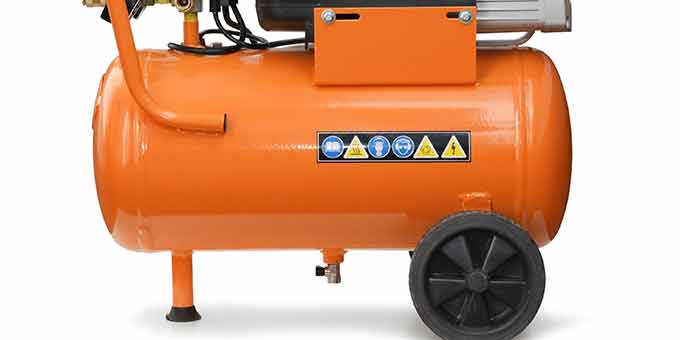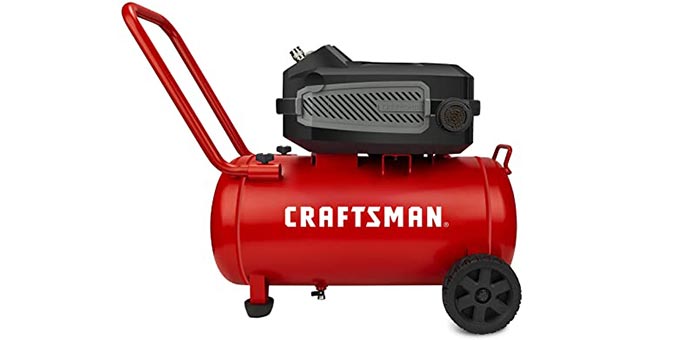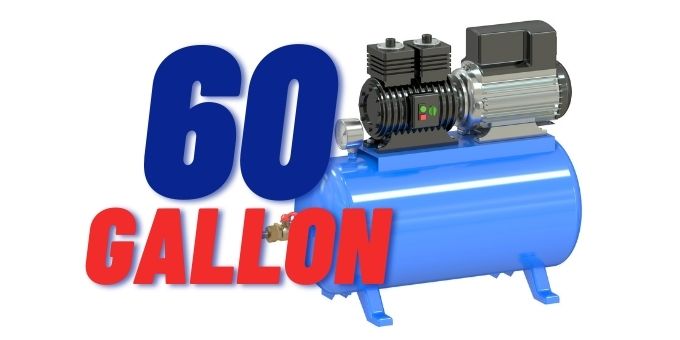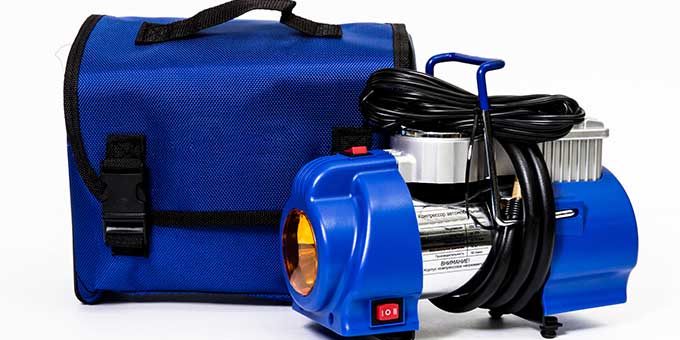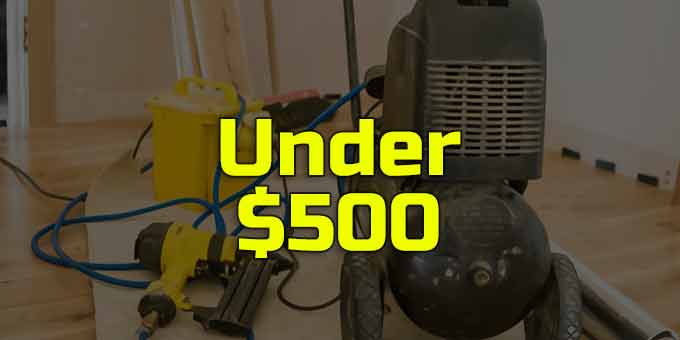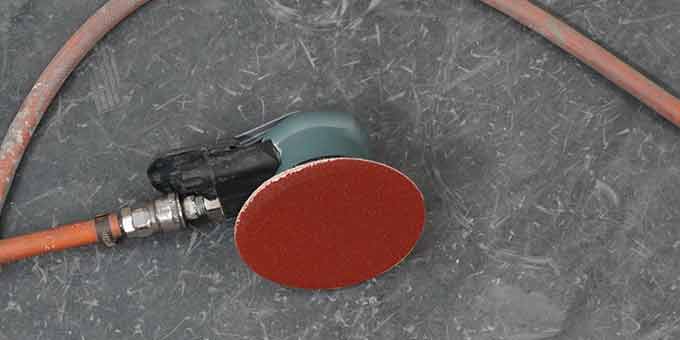You can easily drain your air compressor every day by opening the valve, letting the water out, drying it, and closing it again.
However, air compressors are a handy tool gaining popularity among homeowners. They can make several tasks way more manageable, especially among people who aren’t too experienced using carpentry tools.
An air compressor allows you to use several other tools such as a nail gun and drillers by compressing air and sending it to the devices, making the process much faster and more efficient. Moreover, most air compressors are one-size-fits-all, so you don’t have to worry about them not working with your tools.
Nevertheless, air compressors can easily get damaged if you don’t give them proper maintenance. Therefore, in this guide, you’re going to learn how to drain an air compressor and make it last for years.
How to Drain an Air Compressor the Correct Way
Draining an air compressor can be easy or difficult, depending on how well you know it. This is why we recommend you pay special attention to the following two ways of draining air compressors.
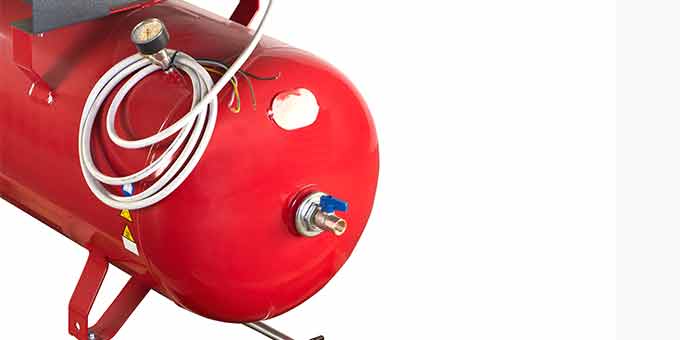
Manual Draining
Manual draining is the most common method for air compressors, as not many people have an automatic drainer. However, to do it properly, you have to follow several steps that can be pretty tricky, but they’re still necessary if you don’t want to deal with water trapped in your device.
Step 1
Firstly, you need to keep yourself safe, which is why you need to make sure the air compressor is completely turned off and there’s no power running through it. The best way to do this is by unplugging it, as the chances are that if you only turn it off, you could still get electrocuted while draining it.
Step 2
Then, you can proceed to reduce the internal pressure in the tank. It should be below 10 PSI to be safe enough to use. In order to do this, you have to find a ring that should be placed on the safety valve, and you’re going to pull it to release all the pressure. With your other hand, you can deflect the air until it is empty. However, don’t forget to use a face shield or any other kind of eye protection, so you don’t get hurt while doing this.
If you don’t make sure to remove all internal pressure from your tank, you could end up causing an explosion, and this terrible hazard could cause awful consequences for your well-being.
Step 3
Finally, the last step is locating the drain valve and opening it to allow all internal moisture to dry out. This should be located at the bottom of the tank. However, you can tilt it around to make the process much easier. Please don’t forget to wear gloves and keep a pan nearby, as you don’t want all that dirty water laying around and creating a mess.
Moreover, you must open the valve completely and ensure all the water has been drained. Sometimes people can think there are no residues left, but this is just an optical illusion created by the blockage that appears when you don’t open the valve completely. This defeats the purpose of draining the valve, as it still can get rusty due to those residues.
You can even take a water hose and clean the inside of the tank to remove all possible rust or slime that may have accumulated inside of it. However, if you choose to do this, don’t forget to completely remove the valve to not damage the rest of the compressor.
Once everything has been drained, make sure to close the valve tightly, and then you can use your compressor again. Nevertheless, make sure there aren’t any leaks that could cause you problems later on.
However, you could still find some problems after cleaning your valve. In cases where the compressor doesn’t turn on, you can do what this article indicates to make it work again.
Electronic Draining
If manual draining sounds too tiring for you, don’t worry, as you still have another option to take care of your air compressor. This is especially useful if you use it every day, as you don’t have to manually drain it every time you need to use it. All you have to do is buy an electronic valve and replace the current one in your compressor. Then, you set the frequency to the one you’re comfortable with, and you’re all set to use your compressor anytime you want.
Keep in mind that if you use this tool daily, you need to drain it at least once a day, and you must connect it to a 12v power source for it to work correctly. Otherwise, you could create a short circuit in the device. Moreover, you could also use a pot or any other item to catch the liquid that pours out.
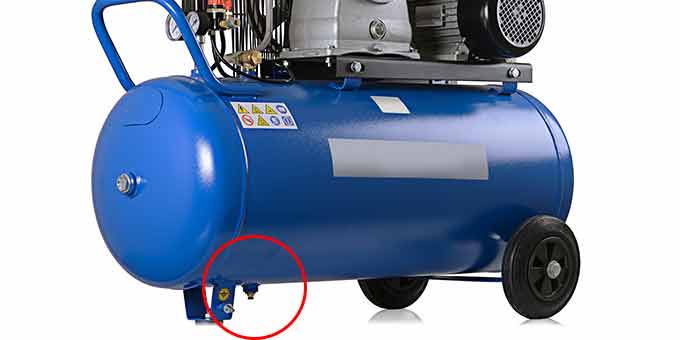
Do I Need to Drain My Air Compressor?
Yes, refusing or failing to drain your compressor could cost you a lot of money once it finally gets damaged. This happens because the air around us contains water in different amounts depending on our geographical location and weather. Therefore, when the compressor takes the air and pressurizes it into compressed air, it gets filled with the water that pools inside when it isn’t drained.
However, some of the most common reasons why you should drain your air compressor are the following.
- This way, you can protect it from accumulating rust, as too much moisture could corrode the interior of the valve and damage it. Luckily, some compressors have safety valves and pressure switches that help you do this.
- It also keeps water droplets from falling into your devices and ruining them, as fragile pneumatic tools could absorb moisture from the compressor and get damaged.
- Finally, having a clean compressor valve can drastically improve the quality of your final job, as the water isn’t going to cause any defects on the surface you’re working on.
How Often Should You Drain Water from an Air Compressor?
Now that you know why it is important to drain your air compressor, you’re probably wondering how often you should do it. Most websites claim that the best thing to do is drain it daily, but how much of that is true? Well, although you may be tempted to leave the air inside for the next time you use your compressor, this may have terrible consequences in the long run.
All the moisture that accumulates in the compressor’s valve comes from the vapor of the air it uses, so if you let the air rest there for longer, the valve is going to get filled faster than usual. However, the frequency in which you should clean the valve is going to depend on how much you use the compressor, as you create more water when you use it more often.
Therefore, a good draining frequency is from once a day to once every other day if you use it daily. However, if you don’t use your compressor all that often, you must drain it every time you finish using it, as you don’t want the water and remaining air to be trapped inside for a long time.
Moreover, you can also check out the manufacturer’s recommendation about the proper way to take care of your compressor, as sometimes the materials or design are going to require a particular maintenance routine. This is going to ultimately prolong your device’s life and take care of your equipment. If you want to know more about those different compressors, please check this article.
What Happens If an Air Compressor Isn’t Drained?
Firstly, we need to evaluate the effects of the water on the tank itself. These tanks are specifically created to endure a certain amount of pressure, and it is usually way more than the pressure it can produce on its own. Moreover, the tanks are covered with a special coating that prevents the water from crashing directly against the steel, but this coating may last less time if you have a bad-quality compressor.
When you let water pool inside the tank, it makes this protection much weaker, and eventually, it is going to come into contact with the steel and cause it to rust. A rusty tank can directly affect the pressure of the compressor, and it isn’t going to be able to deliver the same amount of force as it did before. Ultimately, it is going to end up getting damaged forever.
However, the water that leaks out of the tank may cause some problems, too, as it could easily get into any device or item you use with your air compressor. This happens because the air pushes the pooled water through the air pipe and into your tools. Keep in mind that these tools don’t have a protective coating like your tank, which will make them rust and get damaged much faster.
Finally, you have to consider that if you use your compressor without draining its tank, it will have to work with much less space to store compressed air, which will directly affect its performance. This can even make it burst due to the thinning of the walls and the immense pressure it needs to work correctly, which can cause severe injuries to you and anyone around.
Bottom Line
Now that you know how to take care of your air compressor, you don’t have to worry about creating rust or damaging your other tools. Moreover, if you want to learn more about air compressors, please don’t hesitate to check out the rest of our page.


